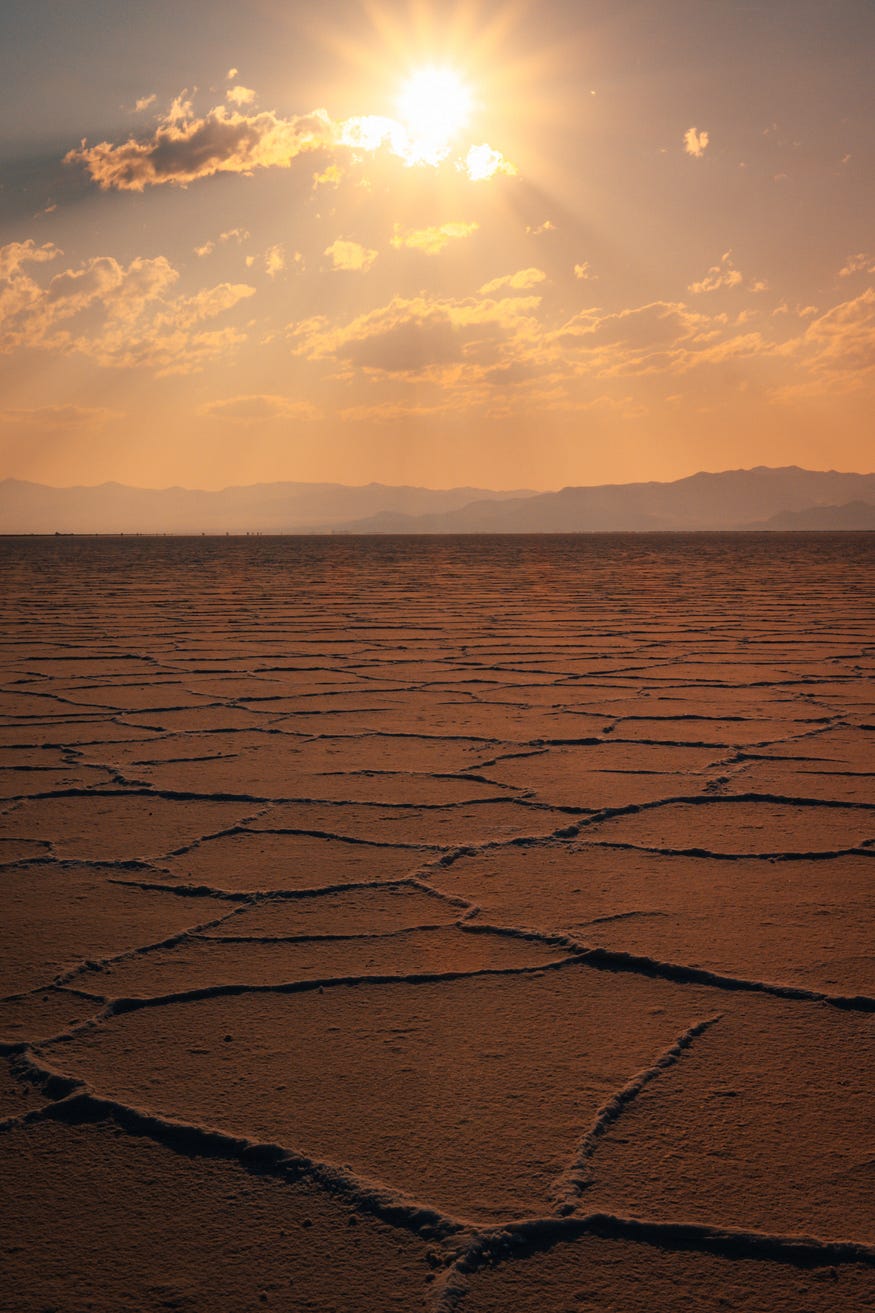The intersection of time and space in the Playa

Photo by Jake Weirick on Unsplash
I drove to eastern Oregon through hours of sage bush, despairing at my decision to attend a writer’s workshop in this godforsaken place. Rifts of old lava disturb the landscape, a pile of black rocks, and lava fracture or lava mound. The highway markers state “Scenic Highway, Oregon Outback.”
I’ll vouch for the outback.
A rancher’s billboard reads “Our water. Our ranches. Our jobs.” It is a literal sign of the conflict over the diminishing and precious resource now too small to serve the fish, the Indigenous tribes, the political subdivisions of counties and towns, the irrigated fields, and the alfalfa hay.
We are in the Great Basin, where no water drains to the sea.
What we have is what we got.
The written directions — GPS is sketchy — are to look for the retreat site between two mileposts. Summer Lake, where I told people I was going, is barely a wide spot in the road along the mud flats.
Juniper fence posts mark the site.
We are a small group at the retreat, with decades of life experience.
What we have is what we got.
The site is a human-made oasis of a few green acres, hosting a micro eco-system: pond, cattails, wildflowers, hawks, songbirds, hummingbirds, woodpeckers, gophers, rabbits and coyotes. Dragonflies and swallowtail butterflies hover over the tall grasses pond-side.
A cooper’s hawk swoops down to the water’s edge and spreads its wings as if to protect its catch. A snake dangles from its talons as it flies to a tall tree limb. A red-headed woodpecker drums on the metal roof of my cabin.
Each animal is hunting for a meal and is hunted for a meal. Life-and-death drama frequents this placid pond.
The Paisley Caves are down the road and up the ridge, where archeologists from the University of Oregon have documented human habitation dating back 14,000 years. Cave paintings, artifacts, mummified scat. Carbon dating challenges the scientific theory that the first Western humans crossed a land bridge 12,000 years ago.
This is a thin place, a place where time and space achieve different dimensions. Transitional zone, between the ecosystems and us, the ancestors and us. Color transitions, as the length of the solar rays, highlight different hues as the sun crosses the sky, creating shadows on the flats. We sit in silence, watching.
Their bones are my bones
The sun’s lengthening rays
Move the mountain’s shadow
Across the playa
The beige clay turns slate gray
Then blue, then green
The dried bed transforms into a
Pleistocene Lake, a cyan lake
A leap of 14,000 years, a blip.
I watch the water move to distant hills.
The ancestors visit
Breathe their air upon the waters.
They find a cave, dive for fish
They bend their tales beneath the surface
Paint on walls, leave scat to mummify.
Their bones are my bones.
The sun slips behind the mountain
Twilight rays move the blue hills to mauve
The lake disappears into bone-dry earth.
An archeologist, a poet
Will find the cave, bend the tales.
Their bones are my bones.
Sharon A. Johnson

SingingFrogPress
Oh I love this. Thank you so much, Sharon.
Sharon Johnson
Thanks for your reading and many kind comments.
Jane
You’ve painted an exquisite landscape, Sharon – magical. I can imagine myself there.
Cheryl Layne West
You saw, experienced the loveliness and unique story of this place, a postcard to the rest of us and a commonality with earlier visitors to this place.